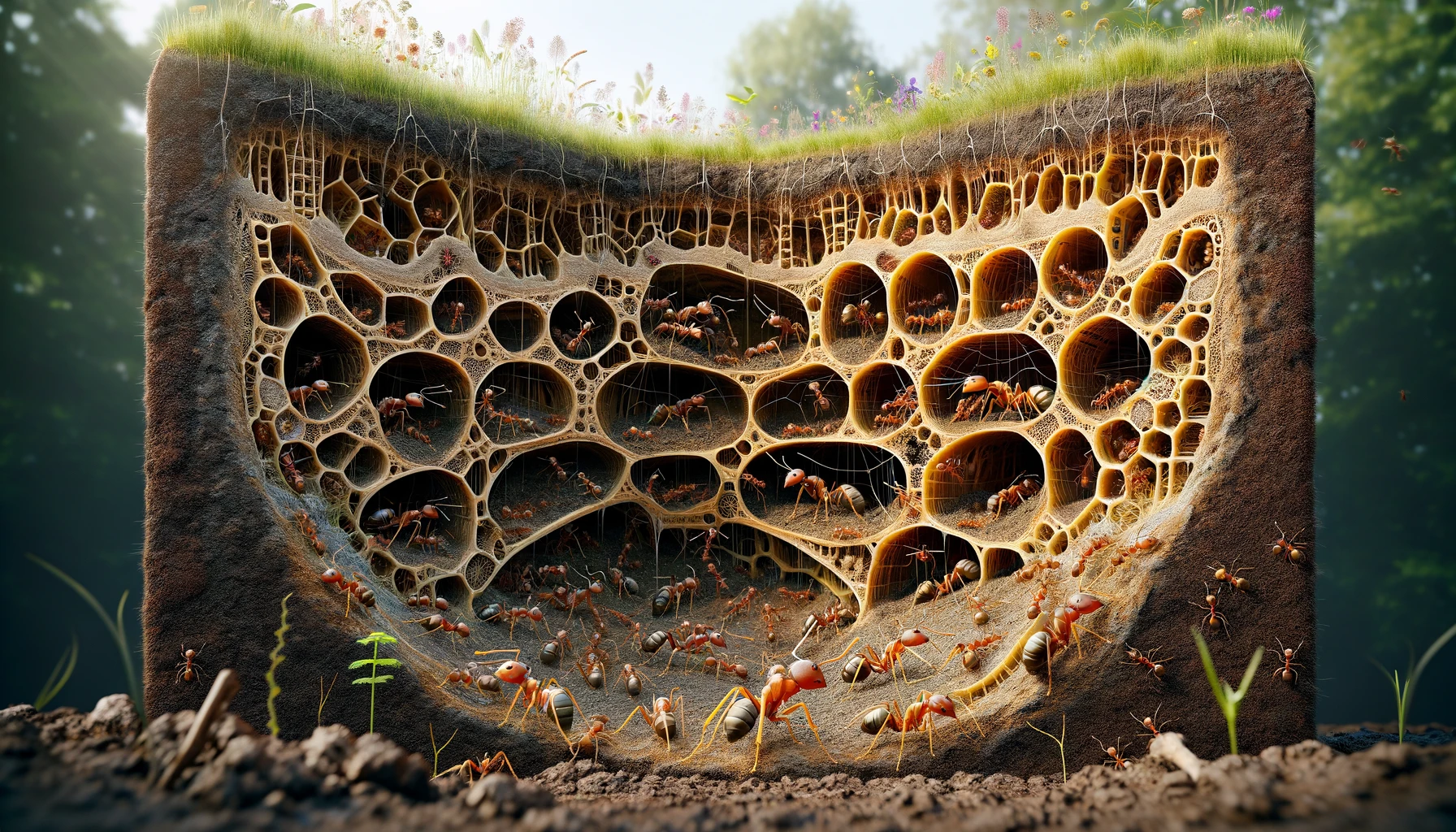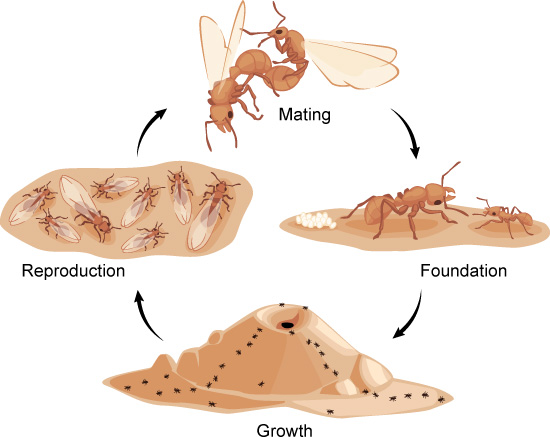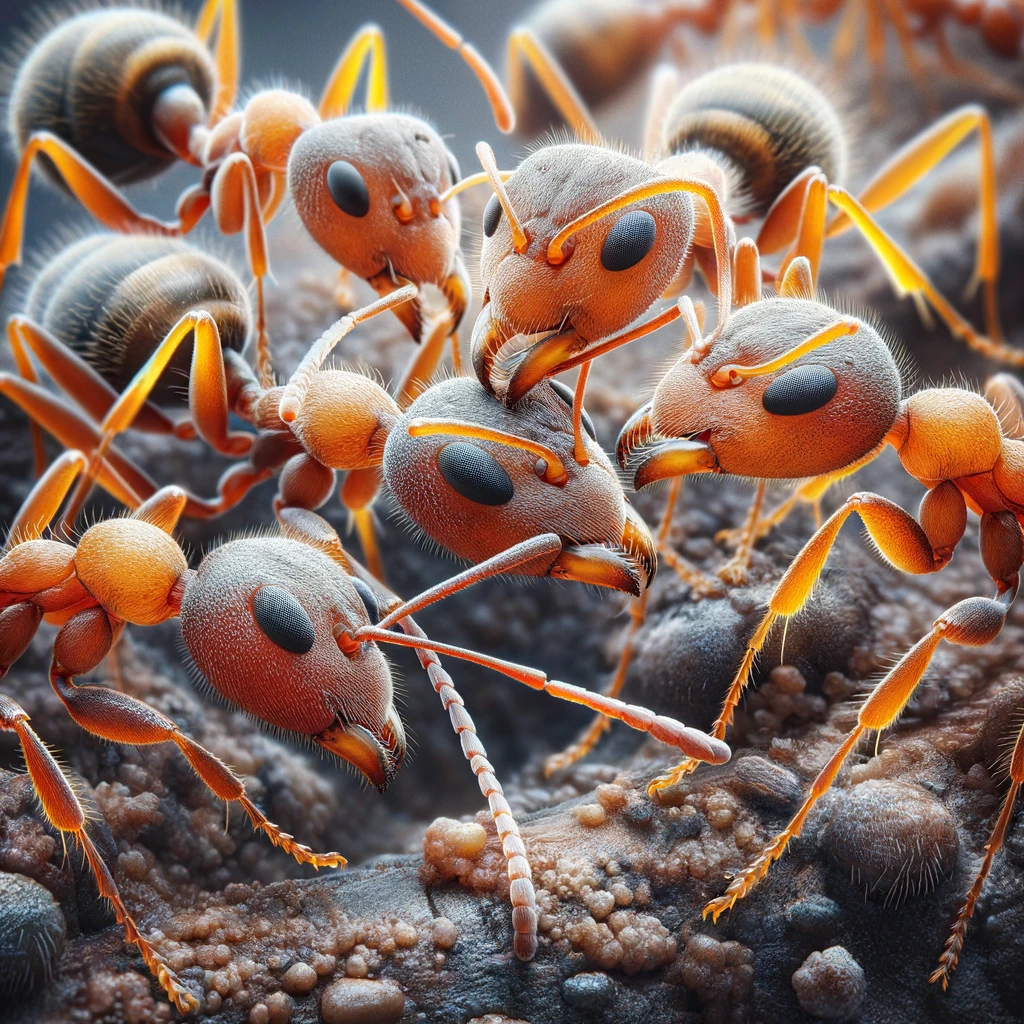
Ants are tiny insects that inhabit practically every corner of our planet. Despite their small size, they live in highly complex and fascinating societies known as ant colonies. These colonies are comprised of thousands, or even millions, of individual ants, each with its own role and purpose within the community. In this article, we will delve into the intriguing world of ant colonies, exploring their size, structure, and the various factors that influence their growth.
One of the most captivating aspects of ant colonies is their social structure. Just like in any society, ants have distinct roles and responsibilities that contribute to the overall functioning of the colony. There are worker ants, whose primary tasks include foraging for food, caring for the young, and maintaining the nest. Soldiers defend the colony from external threats, using their robust mandibles and potent chemical defenses. Finally, there are the queens, the most crucial members of the colony.
The queens play a central role in the reproduction and expansion of ant colonies. They are responsible for laying eggs, ensuring the continuance of the colony's legacy. These queens are typically much larger than other ants and have special glands that produce pheromones, which help regulate the behavior and cohesion of the colony.
Without queens, ant colonies cannot thrive and grow. It is the queens who establish new colonies, and they are the foundation upon which the entire society is built. They have the unique ability to reproduce, producing new generations of ants that will eventually take over various tasks within the colony. Queens can live for several years, allowing them to lead the colony for an extended period.
The presence of multiple queens within a colony can greatly influence its size and structure. In some ant species, colonies may have a single queen, while in others, there can be multiple queens coexisting harmoniously. These multi-queen colonies often have larger populations and are more resistant to disturbances, making them particularly fascinating to study.
If you think a few hundred ants in your kitchen are a nuisance, brace yourself for the world's largest ant colonies. These massive networks house millions of ants and can occupy vast territories. One such extraordinary example is the infamous Argentine ant colony, which stretches over thousands of miles along the coast of Southern Europe, from Spain to Italy. This colossal supercolony consists of genetically related ants that cooperate and maintain a united front against intruders.
But did you know that the Argentine ant colony is not the only record-breaking ant society? In Australia, there is another remarkable ant colony known as the Jack jumper ant colony. These ants are known for their aggressive behavior and venomous sting. The Jack jumper ant colony can cover an area of up to 100 hectares, making it one of the largest known ant colonies in the world. With their powerful jaws and venomous sting, these ants are not to be taken lightly.
Ant colonies continue to amaze scientists and researchers with their intricate social structures and impressive feats of organization. From the queens' vital role in reproduction to the existence of multi-queen colonies and the mind-boggling size of the largest ant colonies on Earth, these tiny creatures never cease to fascinate. So, the next time you spot a few ants scurrying about, take a moment to appreciate the hidden complexities of their world.
The size of an ant colony depends on various factors, including the availability of resources, environmental conditions, and genetics. Understanding the population dynamics within a colony can provide valuable insights into their growth patterns. Ant colonies strive to maximize their population while ensuring that resources are efficiently utilized and not depleted excessively. To achieve this delicate balance, ants engage in sophisticated behaviors such as resource allocation, division of labor, and regulation of fertility.
Ant colonies exhibit remarkable levels of organization and coordination in their quest for survival and expansion. Through intricate chemical communication using pheromones, ants can coordinate tasks, signal danger, and even mark trails to food sources. This communication system allows for efficient collaboration among colony members, contributing to their overall success.
Several factors influence the size of ant colonies. Food availability is a key determining factor, as colonies with a consistent and abundant food supply tend to have larger populations. Environmental conditions, such as temperature and humidity, also play a significant role. Certain species thrive in warmer climates, while others prefer cooler regions. Genetics and the presence of multiple queens can further impact colony size, as previously mentioned.
In addition to external factors, internal dynamics within the colony, such as the presence of specialized castes like workers, soldiers, and reproductive individuals, also contribute to colony size. The division of labor ensures that each member has a specific role to fulfill, optimizing efficiency and productivity. Furthermore, the ability of ant colonies to adapt to changing conditions through mechanisms like nest relocation and foraging strategies influences their population size over time.

Ant colonies go through a distinct lifecycle, starting with the foundation of a new colony. A young queen sets out on a remarkable journey to find a suitable nesting site. Once she locates a suitable spot, she establishes a small chamber where she lays her first batch of eggs. These eggs hatch into larvae, which the queen tirelessly cares for until they eventually develop into adult ants. As the colony grows, the queen's role transitions into primarily laying eggs, while the workers take on the responsibilities of foraging, caring for the young, and maintaining the nest.
As the colony expands, the ants construct elaborate tunnel systems underground, creating chambers for different purposes. These chambers may include nurseries for the young, storage areas for food, and even designated areas for waste disposal. The intricate network of tunnels serves not only as a shelter but also as a means of protection against predators and harsh weather conditions.

Communication and coordination are key to the success of ant colonies. Ants use a combination of chemical signals, vibrations, and visual cues to relay information and maintain social order. Pheromones, chemical substances secreted by ants, play a crucial role in communication. They can signal various messages, such as food availability, danger, or the presence of queens.
Additionally, ants communicate through touch and vibrations. They tap their antennae against one another, sharing information about the location of food sources or potential threats. Some species even engage in a fascinating behavior known as "ant trails," where they form long lines of ants moving back and forth, efficiently transporting food or other resources.
Ant colonies exhibit a remarkable level of coordination in their activities. For example, when a forager ant discovers a new food source, it will communicate this information to other workers through a combination of pheromones and physical movements. This rapid dissemination of information allows the colony to efficiently allocate its resources and respond to changing environmental conditions. The collective intelligence and cooperative behavior displayed by ant colonies are truly awe-inspiring, showcasing the power of teamwork in the natural world.
The world of ant colonies is as captivating as it is diverse. From the intricate social structure and the vital role of queens to the mind-boggling sizes of some colonies, ants never cease to fascinate us. By studying these tiny creatures, scientists gain insights into population dynamics, communication systems, and the interplay between genetics and the environment. As we uncover more about the size and scope of ant colonies, we deepen our understanding of the intricate web of life on our planet.